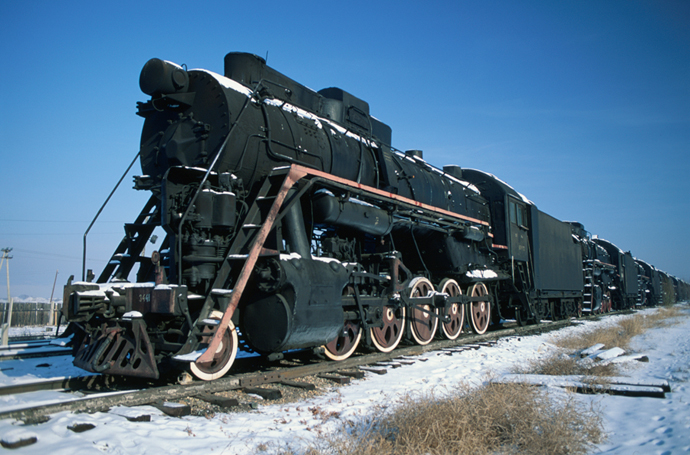The logic behind the world's 4 weirdest strategic reserves
Stockpiling tons of pork has its economic purposes

When unexpected events happen — be they natural disasters or terrorist attacks — the consequences can be dire. As a result, governments have gone to great lengths to prepare for the unexpected as best they can, stockpiling scarce resources in case supplies get cut off.
The most famous example is the United States’ Strategic Petroleum Reserve (SPR). According to the Department of Energy:
With a capacity of 727-million-barrels, U.S. Strategic Petroleum Reserve is the largest stockpile of government-owned emergency crude oil in the world. Established in the aftermath of the 1973-74 oil embargo, the SPR provides the President with a powerful response option should a disruption in commercial oil supplies threaten the U.S. economy. [Energy.gov]
But not every strategic reserve is so straightforward. In fact, some are downright weird — at least at first glance. Here are four of the strangest:
The Week
Escape your echo chamber. Get the facts behind the news, plus analysis from multiple perspectives.

Sign up for The Week's Free Newsletters
From our morning news briefing to a weekly Good News Newsletter, get the best of The Week delivered directly to your inbox.
From our morning news briefing to a weekly Good News Newsletter, get the best of The Week delivered directly to your inbox.
1. China’s strategic pork reserve

China’s economy has grown by leaps and bounds in the last three decades, averaging over 10 percent growth per year. This has lifted millions of Chinese out of poverty and into the middle class. That new middle class has developed a taste for meat — and pork is at the top of the menu. China now consumes over half of the world’s pork.
The communist Chinese government created the pork reserve in 2007 with the aim of stabilizing prices and reducing market volatility.
When pork prices rise, the reserve releases meat to the market in a bid to push down prices for consumers. When the price falls, the reserve buys up pigs in order to keep farmers profitable.
A free daily email with the biggest news stories of the day – and the best features from TheWeek.com
2. Canada’s maple syrup reserve

Canada's Federation of Quebec Maple Syrup Producers — which produces more than 70 percent of the world’s maple syrup — maintains a strategic reserve of the gooey stuff. Officially known as the International Strategic Reserve, it is located in warehouses in three rural Quebec towns, and has a capacity of over 10 million kilograms of maple syrup.
Maple syrup is harvested from the sap of maple trees, which do not produce sap in consistent quantities. Maple trees require cold nights and mildly warm days to yield sap, and the wrong weather can lead to little or no sap. This means that production levels can vary wildly based on the weather.
That isn’t good news if you’re trying to maintain a large-scale industry. Corporate buyers demand consistency, because they don’t want to sink capital into developing and marketing a product, only to have no product to sell. So Quebec’s producers aim for a large harvest in the good times and sock away surpluses for the lean times, which helps them produce a consistent flow at a consistent price.
3. America’s helium reserve

Helium is lighter than air, giving balloons their buoyancy. But helium is not just used in balloons. The largest commercial use of helium — which has a uniquely low boiling point of just four degrees above absolute zero — is as a coolant for superconducting magnets necessary to build magnetic resonance imaging (MRI) machines. Helium is also used as a shielding gas for high-temperature welding, as a coolant in telescopes, and as a coolant in high-capacity hard disk drives.
And although helium is the second-most abundant element in the observable universe — accounting for up to 24 percent of total universal mass — it is quite rare on Earth. That’s because its mass is so low — as anyone who has lost his grip on a helium balloon knows, the gas will rise and rise until it escapes into space.
This means that helium has to be stored and conserved. Most of the helium on Earth was formed as a byproduct of the radioactive decay of rocks, and is currently obtained as a byproduct of the extraction of natural gas.
The National Helium Reserve in Amarillo, Texas, provides 42 percent of America’s helium and 35 percent of the world’s supply. Established in 1925 with the aim of supplying airships, today it holds over one billion cubic meters of helium gas. Worryingly, at current rates of usage, known global supplies of helium are estimated to be entirely depleted in 20 to 30 years.
4. Russia’s steam locomotive reserves

During the Cold War, the threat of nuclear annihilation hung over the world. Military training exercises, troop movements, or intercepted communications could all be misinterpreted as a signal of an imminent nuclear strike. In fact, in 1983 malfunctioning computer equipment in the Soviet Union — mistakenly displaying data showing that the U.S. had launched a first strike — brought the world very close to an accidental nuclear conflict.
And what would follow a nuclear conflict? Well, countries wanted back-up power in case their electricity systems failed as a consequence of an electromagnetic pulse from a nuclear bomb. The Soviet Union kept and serviced a fleet of steam-powered trains — the strategic steam reserve — that could run on coal. The strategic steam reserve still exists today, but it has been decaying since the breakup of the Soviet Union in 1991. According to Russian defense journalist Anton Morasdov:
Only 12 steam locomotives remain at the only preserved base of the Strategic Steam Resource near Roslavl in Smolensk Region and they may be scrapped soon.
Representatives of the locomotive repair depot Smolensk say that all locomotives are already rotten, and are being scrapped little by little. [Defense and Security]
Editor's note: This article has been revised since it was first published in order to more clearly include proper attribution to source material.
John Aziz is the economics and business correspondent at TheWeek.com. He is also an associate editor at Pieria.co.uk. Previously his work has appeared on Business Insider, Zero Hedge, and Noahpinion.
-
 Pakistan: Trump’s ‘favourite field marshal’ takes charge
Pakistan: Trump’s ‘favourite field marshal’ takes chargeIn the Spotlight Asim Munir’s control over all three branches of Pakistan’s military gives him ‘sweeping powers’ – and almost unlimited freedom to use them
-
 Codeword: December 6, 2025
Codeword: December 6, 2025The daily codeword puzzle from The Week
-
 Crossword: December 6, 2025
Crossword: December 6, 2025The daily crossword from The Week